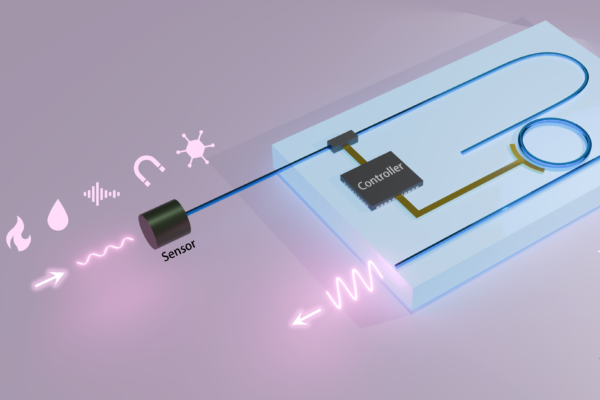The same geometric quirk that lets visitors murmur messages around the circular dome of the whispering gallery at St. Paul’s Cathedral in London or across St. Louis Union Station’s whispering arch also enables the construction of high-resolution optical sensors. Whispering-gallery-mode (WGM) resonators have been used for decades to detect chemical signatures, DNA strands and even single molecules.
In the same way that the architecture of a whispering gallery bends and focuses sound waves, WGM microresonators confine and concentrate light in a tiny circular path. This enables WGM resonators to detect and quantify physical and biochemical characteristics, making them ideal for high-resolution sensing applications in fields such as biomedical diagnostics and environmental monitoring. However, the broad use of WGM resonators has been limited by their narrow dynamic range as well as their limited resolution and accuracy.
In a recent study, Lan Yang, the Edwin H. & Florence G. Skinner Professor, and Jie Liao, a postdoctoral research associate, both in the Preston M. Green Department of Electrical and Systems Engineering in the McKelvey School of Engineering at Washington University in St. Louis, demonstrate a transformative approach to overcome these limitations: optical WGM barcodes for multimode sensing. Liao and Yang’s innovative technique allows simultaneous monitoring of multiple resonant modes within a single WGM resonator, considering distinctive responses from each mode, vastly expanding the range of measurements achievable.
WGM sensing uses a specific wavelength of light that can circulate around the perimeter of the microresonator millions of times. When the sensor encounters a molecule, the resonant frequency of the circulating light shifts. Researchers can then measure that shift to detect and identify the presence of specific molecules.
Read more on the McKelvey School of Engineering website.


